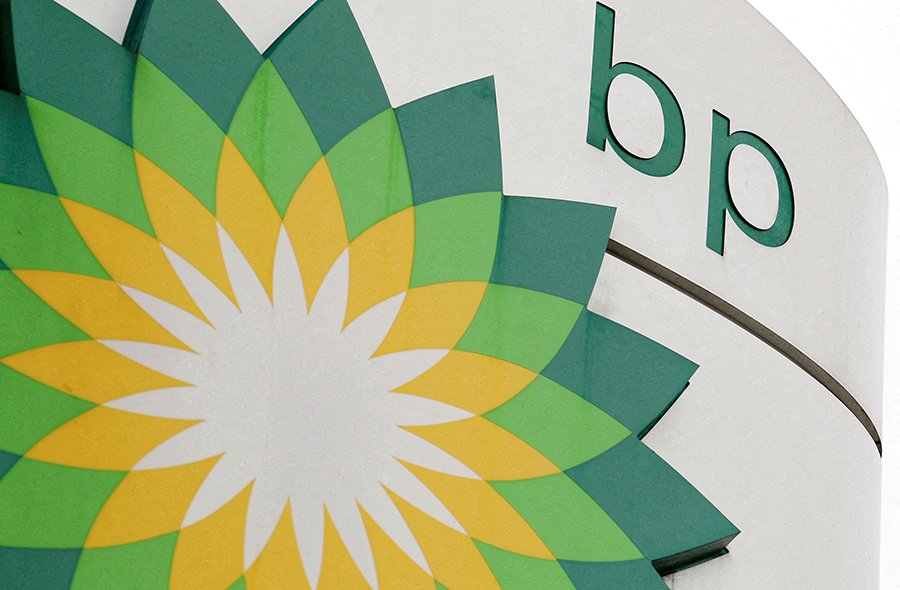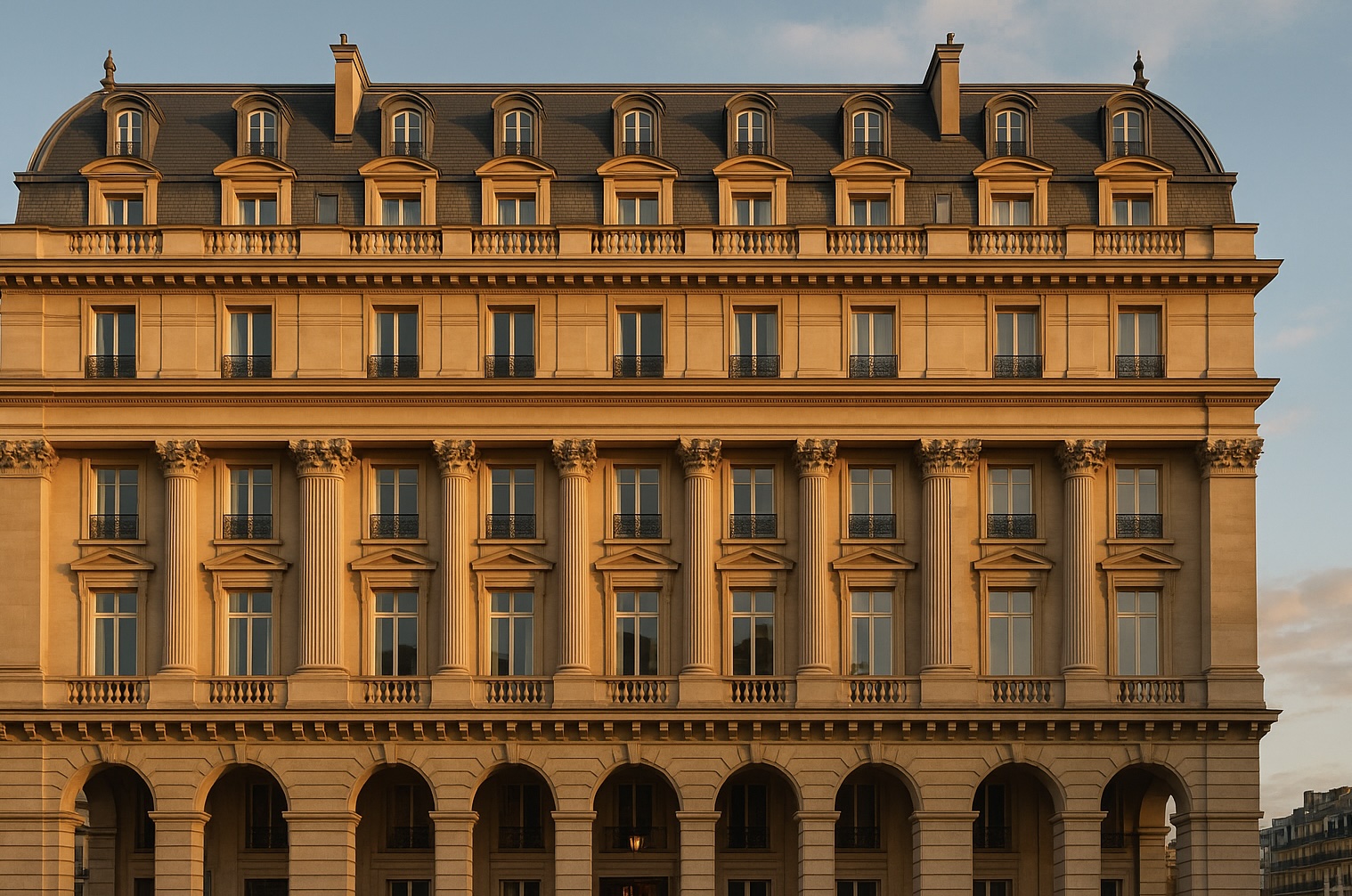читайте также
 Spain’s Real Estate: Record Prices and Falling Yields
Spain’s Real Estate: Record Prices and Falling Yields
 Fuel crisis at Seattle Airport: the Olympic Pipeline outage has disrupted supplies
Fuel crisis at Seattle Airport: the Olympic Pipeline outage has disrupted supplies
 European Hotel Construction Market Breaks Records: Upper Upscale Segment Reaches New Heights
European Hotel Construction Market Breaks Records: Upper Upscale Segment Reaches New Heights
 Middle East Hotel Construction Pipeline Hits Record High: 659 Projects and 163,816 Rooms Under Development
Middle East Hotel Construction Pipeline Hits Record High: 659 Projects and 163,816 Rooms Under Development
 New Rules for Greece’s Golden Visa: What Changes for Investors
New Rules for Greece’s Golden Visa: What Changes for Investors
 Holiday Travel 2025: Less Spending, More Generational Shifts — Deloitte’s New Forecast
Holiday Travel 2025: Less Spending, More Generational Shifts — Deloitte’s New Forecast
Real Estate / Analytics / Research / Hungary / Real Estate Hungary / News / Вusiness / Investments 01.04.2025
Hotels, Offices, Retail, Warehouses — Hungary’s Income Property Market in 2024 and Full Market Analysis for 2025

Domestic Factors Drive Economic Growth; Investments Declined in 2024, But Yields Remain Stable
All this and more can be found in the in-depth Hungary Real Estate Market Outlook 2025 by analytics firm CBRE.
Key Highlights:
• The Hungarian office market is facing limited availability.
• Retail slightly improved in 2024, which positively impacted the commercial segment.
• Industrial and logistics sectors are seeing increased tenant activity, driven by new development and renovations.
• Budapest’s hotel market is nearing pre-pandemic tourism levels, alongside a wave of hotel openings expected in 2025.
Hotels and Tourism Real Estate
Tourism in Budapest continued to grow in 2024, with commercial accommodations recording 10.7 million overnight stays — an 8% year-on-year increase, reaching nearly pre-pandemic levels (only 3% below 2019 figures). In addition, private and other accommodation categories registered 5.3 million overnight stays, meaning guests spent over 16 million nights in the Hungarian capital in total.
Hotels in Budapest recorded over 9 million nights in 2024, including 1.3 million domestic and 7.8 million international guest nights. This marks a total increase of 10.4% compared to 2023, with domestic nights rising by 6.6% and international nights by 11.1%.
The leading source markets for Budapest hotels in terms of nights stayed were the UK, USA, and Germany, though demand from these countries has not yet returned to 2019 levels. In contrast, demand from Hungary’s neighboring countries has grown significantly. Overnight stays by Romanian tourists increased by more than 50% compared to 2019, making them the 7th largest source group for hotel stays in Budapest. Significant increases were also recorded from Polish (+23%), Czech (+25%), and Austrian (+17%) tourists.
Chinese tourists are also returning rapidly to Budapest, helped by seven direct air connections. In 2024, Chinese tourists spent nearly 250,000 nights in Budapest hotels — nearly double the 2023 figure.
In terms of new hotel openings, 2024 did not match the record-breaking 2023 (when about 1,500 new hotel rooms entered the market), but 2023 was exceptional due to postponed projects from the COVID era.
In 2024, three new hotels opened in Budapest, adding 237 rooms to the market. These included the 5-star Kimpton BEM Budapest with 127 rooms, built on the site of the former Radeczky Barracks — further increasing the city's 5-star inventory. There are now 21 five-star hotels in Budapest, totaling about 4,000 rooms — putting it close to Vienna’s offering of 25 five-star hotels with over 4,500 rooms.
Outside the capital, five new hotels with 424 rooms opened. The largest was the Kenese Bay Garden Resort & Conference Hotel on Lake Balaton, which reopened after a major renovation and expansion with 159 rooms. It is now operated by Accent Hotels.
Hungary’s first Hilton-branded hotel outside Budapest — the Hilton Garden Inn Debrecen City Center — opened with 101 rooms. This move capitalizes on Debrecen’s rise as a hub for car and battery production.
2025 could again see a major boost in hotel supply, with up to 1,900 new rooms anticipated. Nine hotels are expected to open in Budapest, adding 800 rooms. Outside the capital, 10 hotel openings are planned, contributing more than 1,000 additional rooms.
This includes Hungary’s first Marriott-branded hotel on Lake Balaton — the Le Meridien in Balatonfüred with 102 rooms — and the first branded airport hotel in Debrecen: Ibis Styles with 73 rooms.
Following a renovation, the historic Hotel Lycium will join Accor’s Handwritten Collection.
Between 2026 and 2028, Hungary is expected to see the opening of 11 additional hotels currently under construction (1,880 rooms), and another 11 hotels in the planning phase (1,829 rooms). If all are realized, Budapest’s hotel market could grow by 3,700 rooms in that period. In contrast, rural development seems to be slowing, with only about 1,000 rooms in the planning pipeline expected to open by 2028.
All key hotel performance indicators in Budapest improved in 2024. Occupancy reached 67.9%, with an average daily rate (ADR) of around €111. Revenue per available room (RevPAR) was about €75. Compared to 2023, occupancy rose by 4.1 percentage points, ADR by 9.4%, and RevPAR by 16.6%.
Passenger traffic growth and the shift toward premium accommodation suggest that both ADR and occupancy will continue to rise. Budapest Airport hit a peak of over 17.5 million passengers — 8.7% above 2019 and 19% more than in 2023. After the Hungarian government acquired the airport in 2024, plans for a third terminal were announced to increase annual passenger capacity to 20 million by 2030.
Hungary’s growing tourism appeal is reflected in consistently high passenger numbers: more than one million passengers per month, and in October, Budapest Airport recorded the highest traffic growth among Europe’s 50 busiest airports.
A second airport hotel will open in 2025 — the TRIBE by Wing, with 167 rooms.
Economic Growth Driven by Domestic Factors
2024 was a difficult year for the Hungarian economy. Annual GDP growth of 0.6% fell significantly short of expectations. Forecasts made at the beginning of the year were not met, primarily due to weakened export markets caused by sluggish economic conditions in Germany and the wider EU.
Following a decline in Q3, Hungary barely avoided a technical recession by the end of the year, returning to growth in Q4. The outlook for 2025 is better, though analysts remain cautious about a full market recovery.
According to a Portfolio.hu analyst poll, Hungary’s GDP growth is expected to range between 1.8% and 2.5% in 2025.
Oxford Economics forecasts a 1.7% increase in GDP for 2025, with a rebound to around 3.5% expected in 2026/27.
The Hungarian government maintains a more optimistic outlook, having based the 2025 budget on projected economic growth of 3.4%. However, similar over-optimism was observed the previous year.
One key economic driver was the start of production at BMW’s new plant in Debrecen in late 2024. But to meet the government’s ambitious 2025 growth target, an extraordinary acceleration would be needed in the second half of the year — a development largely dependent on external factors (such as a recovery in Germany), which remains unlikely due to ongoing political constraints (e.g. restricted access to EU investment funds).
Both economists and the government agree that household consumption may support growth in 2025, while investment and net export prospects remain much gloomier.
Domestic Consumption and Real Wages
Household consumption could be a driving force for growth, but it’s hampered by a decline in real wages in recent years.
An additional boost to consumption may come from interest payments to households via government bonds — estimated at €4.1 billion in 2025. This income is tax-free, and around 63% of it is expected to be paid out in Q1. The majority of these funds are likely to flow into real estate — particularly through mortgage subsidies.
Household spending rebounded in 2024, and retail dynamics could improve further in 2025. However, weaker retail data from December 2024 dampened optimism, and a spike in inflation in January 2025 was an unwelcome surprise.
Average annual inflation in 2024 stood at 3.7% — notably lower than expected earlier in the year. However, higher-than-expected inflation in January (5.5%) suggests a possible acceleration, potentially bringing 2025 inflation to 4–5%.
The current base interest rate is 6.5%, and is only expected to fall below 6% by the end of the year. Significant monetary easing will likely be delayed until 2026/27.
According to Hungary’s Central Statistical Office (KSH), the average gross monthly income reached €1,690 by the end of 2024. Wages have been growing at rates well above GDP growth — with a 12% increase in 2024, placing salaries around 50% higher than in 2021. However, this wage growth measured in forints translates into a lower rise in euros due to a 2% depreciation of the forint since 2023 and a 10% drop since 2021.
The strong wage growth in 2024 was justified by high inflation in 2023 and expectations of sustained inflation in the near term. Since inflation decreased faster than expected, real wage growth turned out to be higher than initially projected. Going forward, wage growth is expected to be more moderate — around 7% in 2025/26 — as inflation remains below 5%.
Strong FDI Inflows, Weak Export Markets
Despite an overall investment downturn, Hungary continues to stand out in terms of green transition and foreign direct investment (FDI) inflows. After a record-breaking 2023 (over €13 billion in FDI), announced FDI projects in 2024 totaled €10.3 billion.
China led in investment volume with €5.2 billion, largely thanks to the announcement of BYD’s new factory in Szeged (Southern Hungary). South Korea ranked second with €2.6 billion, while Germany continued to lead in terms of the number of projects.
By sector, the automotive industry remained dominant, followed by electronics and food. The vast majority of FDI is expected to boost GDP in regional areas. The services sector GDP doubled over the year, indicating a stronger focus on innovation-driven investments. Budapest remains a globally competitive location with high value-added services.
Since peaking in Q2 2022, total investments have declined by 25%. They are expected to remain flat in 2025 before rebounding in 2026–27 as demand outlooks improve. Notably, private sector investment delays are due to weak demand rather than lack of funding. Public investments, however, are clearly constrained by a lack of EU funds from Brussels, which could result in 1–1.5% higher growth in other CEE countries in 2025.
The Hungarian government postponed several major infrastructure projects and is supporting others via targeted programs — including subsidies for energy efficiency, real estate development, and subsidized loans. New economic policy initiatives are focused on three priority areas, including affordable housing.
While the “traditional investment” segment saw its lowest turnover in 11 years, 2024 saw a rise in activity around development opportunities, vacant assets, or properties suitable for conversion. Annual property investment volume dropped to just €315 million — down 21% year-on-year.
In 2024, retail accounted for the largest share of the investment market (33%), followed by offices (20%) and hotels (16%). The once-booming industrial sector made up 14%.
The average deal size fell to €12.6 million (-32% y/y), indicating a shift toward smaller assets. The largest transaction was the sale of Exchange Palace (former MTV HQ), though it did not exceed €50 million. Most buyers were property companies (36%) and private investors (27%). Domestic Hungarian investors dominated by origin.
Experts do not expect major capital inflows from traditional Western European markets. China continues to play a key role in Hungary’s FDI landscape, and Chinese interest in cash-flow-generating real estate — especially retail — is growing.
While more risk-averse capital remains on the sidelines, Chinese capital could become a key driver in 2025–2026. With increased activity in early 2025 and a broader sale portfolio, total investment volume could rise to €700–800 million this year.
Stable Yields in Hungary Are Becoming More Attractive
Prime yields have recently shifted in several local markets across the CEE region. Since yields have not compressed in Hungary, the yield gap has widened — making Hungarian pricing more attractive compared to regional peers.
Still, yields remain difficult to assess, as liquidity even in the prime segment is limited. As of the end of February 2025, prime office yields stood at 7.00%, shopping centre yields at 6.75%, retail park (strip mall) yields at 7.35%, and hotel (leased asset) yields at 7.50%.
Older buildings and development plots may stand to benefit. International hotel brands are seeking expansion opportunities, driven by active tourism, the rising number of foreign students, and changes in rental housing regulations. Recently, the government launched a new capital injection program — allocating HUF 300 billion over the next five years — to support housing affordability. Funds can be used for non-repayable subsidies (especially in rental housing), covering up to 70% of project costs. This is likely to speed up new residential developments.
Office Property – Hungary’s Economic Engine Moving Slower Than Expected
Budapest’s office stock is expanding more slowly than expected due to delays and rescheduling of new projects. 2024 delivery volume fell 40% short of forecasts. A significant portion of new supply has been pushed to 2025. Annual completions totaled 103,600 sq m (roughly the same as 2023), pushing Budapest’s total office stock to 4,455,600 sq m by the end of the year.
Major completed projects in 2024 included Liberty North Wing (19,800 sq m in Pest, Q3), Richter Gedeon Headquarters (17,400 sq m in Pest, Q2), and Millennium Gardens South (16,900 sq m in Pest, Q1).
Developer activity remained low in 2024 due to market uncertainty, although two new projects were launched late in the year. Skanska began the second phase of H2Offices and construction of the Modiano Center.
Currently, 529,000 sq m of space is under construction, including 18,100 sq m of refurbishment projects. A large portion is already pre-let. BudaPart, Dürer Park, and Zugló City Center are the three largest developments, accounting for two-thirds of the upcoming office pipeline. This translates into 165,600 sq m for 2025 (68% pre-let), 270,600 sq m for 2026 (88% pre-let), and 92,600 sq m for 2027 (65% pre-let). The exceptionally high pre-let rate stems from leases signed with government institutions in 2023.
Most new office space is located in Non-Central Pest (33% of pipeline) and South Buda (27%). Another 225,000 sq m of planned projects have not yet started construction, which severely limits new space availability for companies looking to relocate in 2025–26.
Lease Renewals Dominate Office Market Activity
Most leases signed in 2024 were renewals. Demand growth was driven largely by extensions, which is disadvantageous for landlords holding significant portfolios, as rent hikes are legally restricted during renewal.
Take-up volume excluding renewals stood at 214,800 sq m (-11% y/y), while total leasing activity (including renewals) reached 502,200 sq m (+8% y/y), with growth in Q4.
Excluding major government leases from 2023, the share of renewals has been consistently rising — from 37% in 2022 to 48% in 2023 and 57% in 2024. Meanwhile, pre-lease activity declined, reaching just 2% of total take-up by the end of 2024 (compared to 11% in 2022). This drop also reflects the lack of available development opportunities.
The average lease size increased by 6% y/y relative to total leasing activity, although acquisition-only deals declined by 17% y/y — indicating that the growing share of renewals raised the average deal size.
Looking at net demand (net absorption) by submarket, Váci Corridor posted the largest take-up with 51,100 sq m. Year-on-year, the strongest growth occurred in the Periphery and Non-Central Pest. Annual net absorption turned positive again, reaching 47,700 sq m in 2024. By location, the highest net absorption was seen in Central Buda (17,300 sq m) and South Buda (16,400 sq m).
Vacancy Rate Trends in the Office Market
The overall office vacancy rate continued to rise, reaching 14.1%. The lowest vacancy levels were recorded in Central Buda (8.0%) and North Buda (8.7%). In contrast, the highest vacancies were in provincial markets — at 28.6%.
Experts expect vacancy rates to rise further in 2025, exceeding 15% by year-end. Stronger demand growth is needed to balance out upcoming supply — even though much of the pipeline is already pre-let.
As of January 2025, the average asking rent for vacant space increased slightly to €14.85/sq m/month — just 2% higher than the previous year. The largest annual increases were recorded in Central Buda and the Periphery, with rents rising by 8% and 6% respectively. For ongoing developments, typical asking rents range from €20–25/sq m. In the premium segment, asking rents stand at €25/sq m in central areas and €19/sq m in non-central areas.
Retail Sales Modestly Improved in 2024
Consumer price inflation slowed much faster than expected, reaching a moderate level. The CPI rose by an average of 3.7% in 2024, returning to levels seen before the energy crisis. Most notably, energy prices dropped by 4.6%, while food prices showed a very modest increase of 2.8%.
However, service prices rose nearly 9% over the year, reflecting stronger consumer sentiment in this segment. While the figures for 2024 were modest, inflation must be closely monitored in 2025, as inflationary pressures appear to be rising again — potentially threatening the recovery of household purchasing power.
According to KSH (Hungarian Central Statistical Office), retail sales volume rose by about 2.6% in 2024. Food sales increased by 3.7% year-on-year, while non-food retail grew by 2.4%. The cosmetics category recorded the highest growth (+9.6%), followed by pharmacies (+4.9%). Gasoline sales stabilized after years of volatility, remaining nearly unchanged.
CBRE’s market monitoring showed that in Q4 2024, the majority of new retail units belonged to restaurants and cafés (20%). The health and beauty sector was also active, accounting for 10% of new store openings.
Eight new brands entered the Hungarian market in 2024 — more than in 2023 and on par with 2021–22. Among them were five fashion brands, one furniture store, and two from other categories. Irish retailer Primark opened its first store at Arena Mall in Q2 and was warmly received by Hungarian shoppers. Koton opened its first store in KOKI and plans further expansion nationwide. From the US, Banana Moon, specializing in lingerie, opened in Allee Mall, and Marciano by Guess debuted on Fashion Street.
Orsay, a mid-range women’s fashion brand, returned to Hungary after exiting in 2022. Initially reopening in the capital, the brand is now expanding to regional cities, albeit with fewer stores than before. Hungarian brands also made moves: Luxoya opened in Westend, and Anybody launched in Allee. Vellea Home opened its first Hungarian store at the Váci út Shopland Gallery.
In Budapest’s top shopping centres, the vacancy rate is extremely low — just 1–2%. In regional flagship malls, vacancies have also mostly been filled post-COVID. This is underscored by large-scale renovation and expansion projects: Duna Plaza added 15,000 sq m, and Alba Plaza in Székesfehérvár will add 20,000 sq m by 2028. Additionally, FORUM in Debrecen plans to expand by 15,000 sq m due to high occupancy.
In regional cities, top-tier shopping centres have low vacancy rates, though efforts are focused on filling mid- to low-tier malls — typically discount centres — following renovations. In Greater Budapest’s modern retail parks, vacancy is low at 2–3%, while in regional cities it's slightly higher at 4–5%.
In Budapest, foot traffic on Váci Street and Fashion Street is mostly driven by international tourists, and the positive tourism outlook suggests this will continue. Tenant demand is strong — Váci Street has a 1% vacancy rate, and Fashion Street is nearly full. Strong demand in these areas has spurred expansion into adjacent zones, such as Petőfi Sándor Street and Servita Square.
Few New Completions in 2024, Stronger Outlook for 2025
In 2024, Hungary saw just 31,000 sq m of new retail space delivered, with 96% located in regional cities. These were typically small retail parks and strip malls, averaging 4,000 sq m each. In Budapest, Müller opened a new store on Váci Street.
By early 2025, the total volume of modern retail floor space in Hungary had reached 4.6 million sq m — including 36% retail warehouses, 32% shopping malls, and 32% retail parks (including 12% hypermarkets).
The retail property market remains relatively cold. For 2025, around 59,000 sq m of projects are under construction, focused mainly on regional cities. Only one project, the Zenit Corso Mall, is located in Budapest — offering 11,000 sq m as part of the mixed-use Zugló Városközpont development, which also includes residential and substantial office components. Projects in the regions tend to be small retail parks or warehouses, with an average size of 4,800 sq m.
Rents and Service Charges
In Budapest’s best shopping centres, base rents can reach €70–90/sq m/month. After the energy crisis, service charges were significantly corrected and remained largely unchanged in 2024. Increased tourism activity has boosted demand for main high street locations, potentially pushing rents higher.
As of January 2025, asking rents for a typical 100 sq m unit on Váci Street or Fashion Street ranged from €90–120/sq m/month. On Andrássy Avenue, rents ranged between €50–65/sq m/month.
Industrial & Logistics
In 2024, total leasing activity in Hungary’s industrial and logistics sector declined by 7% compared to 2023. The market experienced a slowdown reminiscent of pandemic-era conditions, along with increased flexibility from landlords. Although the development pipeline began to shrink, it remains sufficient to meet demand and could replicate last year’s volumes.
A total of 22 new projects were delivered in 2024, with 84% occupancy upon delivery.
The nationwide annual delivery volume reached 486,000 sq m — down 6% from the previous year. This includes Greater Budapest, which saw 237,000 sq m of completions, 34% lower year-on-year. New deliveries spiked in Q4, accounting for roughly 57% of the annual figure. The South Budapest submarket had the most completions (48%), followed by West Budapest (26%).
The 2025 pipeline forecasts 314,000 sq m in Greater Budapest (23% pre-let) and 144,000 sq m in regional Hungary, where the pre-let ratio is much higher — 65%. Developers are focusing on pre-leasing in regional cities, targeting sites near large foreign direct investment hubs.
In the regions, most construction is happening in Debrecen, driven by the presence of the BMW plant and battery manufacturers. In Szeged, further development potential exists but is constrained by a lack of industrial land. Pécs is emerging as a potential new manufacturing centre in the southwest.
Logistics Vacancy Rates Expected to Rise
In Greater Budapest, vacancy rates declined throughout the year due to strong absorption. In contrast, vacancy in regional areas increased slightly compared to Q1 2024. By the end of 2024, the national logistics vacancy rate stood at 7.6%, with Greater Budapest at 7.9% (down 1.7 percentage points year-on-year), and regional Hungary at 6.8% (up 0.2 percentage points).
However, there is a rising trend of “hidden vacancy.” More and more tenants — particularly logistics operators — have a significant amount of unused space within their rented premises. In addition, several large tenants are preparing to relocate from older buildings to newer, more efficient, modern warehouses, which will free up a considerable stock of outdated (secondary) space, increasing the effective vacancy rate further.
As of Q4 2024, Greater Budapest had a total of 298,000 sq m of vacant space across 73 buildings. The largest availability in existing stock was in West Budapest (91,900 sq m) and South Budapest (80,400 sq m). In the regions, the largest absolute availability was in Székesfehérvár and Miskolc.
Rental Growth May Slow Down
Prime rental levels remain stable, but landlords are increasingly using incentives to persuade or retain tenants. Instead of or alongside rental discounts, they may shorten lease terms from the standard five years to three years.
The rent gap between Greater Budapest and regional Hungary is minor. By year-end 2024, headline rents averaged:
€5.7/sq m/month for regional warehouses (+2% y-o-y)
€6.9/sq m/month for urban logistics in Budapest (-1% y-o-y)
Build-to-suit projects are becoming more expensive, and new developments are expected to push industrial and logistics rents even higher, with some new projects asking above €6.0/sq m/month.
Подсказки: Hungary, Budapest, real estate, investment, commercial property, hotels, logistics, retail, offices, market outlook, 2025, CBRE, real estate trends, tourism





